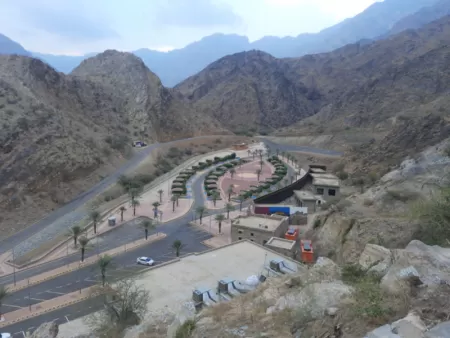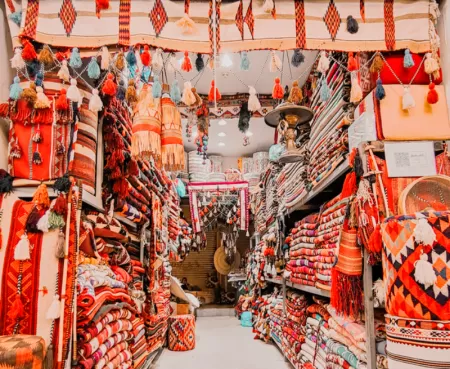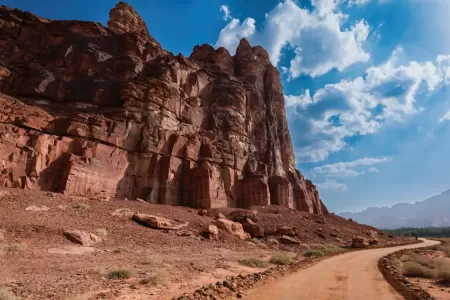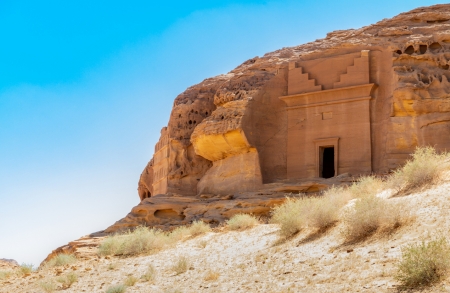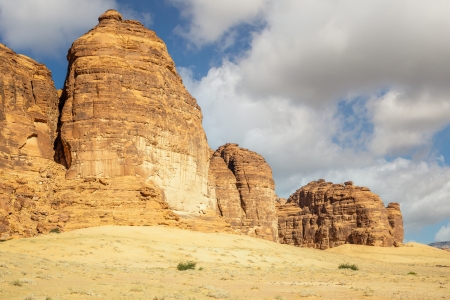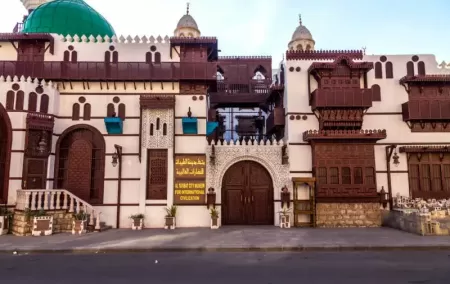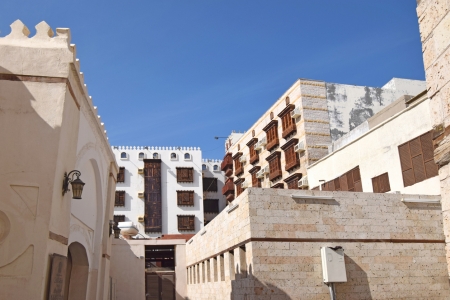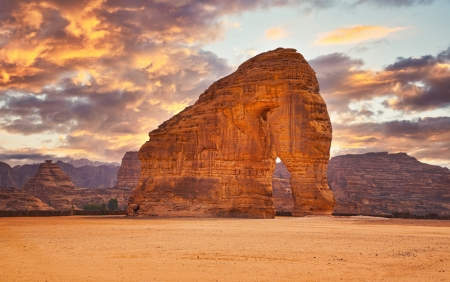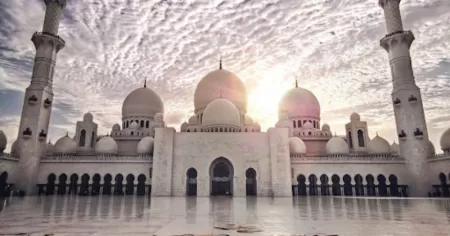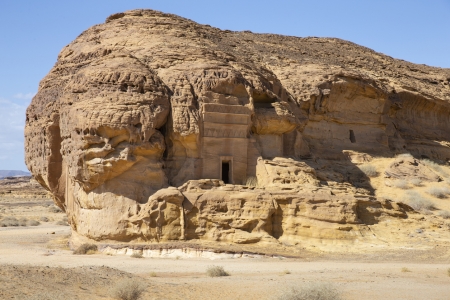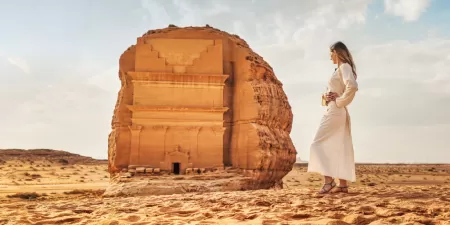The Fascinating Legacy of the Lion Tombs in Al-Ula
The Lion Tombs of Dadan are some of the most iconic and mysterious archaeological features in AlUla, Saudi Arabia. Carved into the sandstone cliffs over 2,000 years ago, these tombs are distinguished by lion sculptures guarding their entrances, symbolizing power and protection in the Dadanite civilization. Believed to be the burial sites of elite members of society, the tombs reflect the artistic and spiritual values of one of Arabia’s most advanced pre-Islamic kingdoms. Their preservation offers invaluable insight into ancient funerary practices and the region’s historical significance.

Nestled within the majestic landscape of Al-Ula, the Lion Tombs stand as a testament to the rich history and cultural significance of the region. These ancient rock-cut burial sites, adorned with exquisite lion reliefs, offer a glimpse into the lives of the people who once thrived in this area. The Lion Tombs are not only remarkable for their artistic features but also for the historical narratives they encapsulate. This article delves into the origins, architectural styles, cultural influences, and the significance of the Lion Tombs, inviting travelers to explore the wonders of Saudi Arabia through these archaeological marvels.
Historical Context of the Lion Tombs:
The Lion Tombs date back to the 6th century BCE and are located in the ancient oasis of Dadan, which is now part of modern-day Al-Ula in Saudi Arabia. This area was once a thriving kingdom known for its strategic position along trade routes that connected the Arabian Peninsula with the Levant and beyond. The Dadanites, who inhabited this region, were known for their trade in frankincense and myrrh, which were highly sought after in ancient markets.
The tombs themselves are believed to have been created during the Lihyanite period, a time when the local population was influenced by various surrounding cultures, including Mesopotamian and Arabian traditions. The inscriptions and carvings found within the tombs provide valuable insights into the religious beliefs and social structures of the time.

Architectural Features of the Lion Tombs:
The Lion Tombs are characterized by their unique rock-cut architecture, which reflects the skill and artistry of their creators. The tombs are typically square-shaped niches carved into the cliffs, with some reaching impressive heights of up to 50 meters above the valley floor. The facades of the tombs are adorned with intricately carved lions, symbolizing strength and protection for the souls of the deceased.
Each tomb is approximately two meters deep and showcases a variety of decorative elements that highlight the cultural influences of the period. The use of relief sculptures, particularly the lion motifs, indicates a blend of local and foreign artistic styles, showcasing the Dadanites' connections with neighboring civilizations.
Cultural Significance of the Lion Tombs:
The Lion Tombs hold immense cultural significance, serving as a reflection of the beliefs and values of the Dadanite civilization. The presence of lion sculptures suggests a belief in the afterlife, where the deceased would be protected and guided by these powerful creatures. This notion of protection is further emphasized by the inscriptions found within the tombs, which often contain prayers and declarations affirming the deceased's faith.
In addition to their religious implications, the Lion Tombs also serve as a testament to the social hierarchy of the time. The elaborate designs and carvings indicate that those buried within were likely individuals of high status, such as local governors or influential traders. This is evident in the distinctiveness of certain tombs, which feature more intricate decorations compared to others.
Inscriptions and Their Interpretations:
Inscriptions found at the Lion Tombs provide valuable insights into the beliefs and practices of the Dadanites. One notable inscription is the declaration of monotheism, known as the Shahada, which affirms the belief in a single deity. This inscription reflects the religious landscape of the time, highlighting the influence of Islamic teachings even before the advent of Islam.
Another significant inscription is the declaration of forgiveness (Istighfar), which emphasizes the importance of seeking forgiveness from Allah. This inscription showcases the spiritual practices of the Dadanites and their connection to the divine. The inscriptions are primarily written in a simple Kufic script, showcasing the evolution of Arabic writing during this period.
The Discovery and Excavation of the Lion Tombs:
The Lion Tombs were rediscovered during archaeological excavations in the 20th century, shedding light on the rich history of the Dadanite civilization. Archaeologists uncovered the tombs along with various artifacts, including pottery and tools, which provided further context to the lives of the people who once inhabited the region.
The excavation process revealed not only the architectural features of the tombs but also the intricate details of the carvings and inscriptions. These discoveries have contributed significantly to our understanding of the cultural and historical significance of the Lion Tombs, making them a focal point for researchers and historians alike.
Visiting the Lion Tombs: A Journey Through Time:
For those interested in exploring the Lion Tombs, guided tours are available through the Al-Ula Winter Park information center. These tours provide visitors with a chance to learn about the history and significance of the tombs while experiencing the breathtaking landscape of Al-Ula.
Tips for Visitors:
- Best Time to Visit: The ideal time to explore the Lion Tombs is during the cooler months, from October to April, when temperatures are more pleasant.
- Guided Tours: Consider joining a guided tour to gain insights from knowledgeable guides who can share the rich history of the site.
- Photography: Capture the stunning architecture and natural beauty of the area, but be respectful of the cultural significance of the tombs.
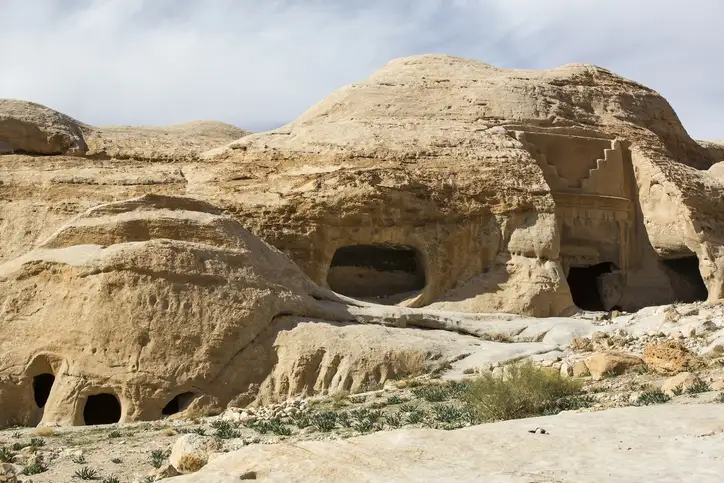
The Role of the Lion Tombs in Saudi Arabia's Cultural Heritage:
The Lion Tombs play a crucial role in Saudi Arabia's cultural heritage, serving as a reminder of the region's ancient civilizations and their contributions to history. As part of the broader archaeological landscape of Al-Ula, these tombs are a key component of the country's efforts to preserve and promote its historical sites.
The Saudi government has recognized the importance of the Lion Tombs and has invested in conservation efforts to protect these invaluable cultural treasures. By promoting tourism to the area, the government aims to raise awareness of the region's rich history and encourage visitors to explore the wonders of Saudi Arabia.
The Impact of Tourism on the Lion Tombs:
As interest in Saudi Arabia's historical sites continues to grow, the Lion Tombs have become a popular destination for tourists seeking to immerse themselves in the country's rich heritage. The influx of visitors has brought both opportunities and challenges for the preservation of the tombs.
While tourism can provide essential funding for conservation efforts, it also poses risks to the integrity of the site. To mitigate these challenges, authorities are implementing measures to ensure that visitors can enjoy the tombs while minimizing their impact on the delicate environment.
Responsible Tourism Practices:
Stay on Designated Paths: Visitors should adhere to marked paths to protect the surrounding landscape.
Limit Group Sizes: Smaller groups can help reduce the strain on the site and enhance the visitor experience.
Educate Others: Share knowledge about the significance of the tombs to promote awareness and appreciation for the site.
The Lion Tombs in Popular Culture:
The Lion Tombs have captured the imagination of many, inspiring artists, writers, and filmmakers to incorporate elements of this ancient site into their works. The tombs' striking architecture and rich history have made them a symbol of the enduring legacy of the Dadanite civilization.
As interest in the Lion Tombs continues to grow, they are likely to feature prominently in future cultural narratives, further solidifying their place in the collective memory of Saudi Arabia's heritage.
Conclusion: A Legacy Worth Exploring:
The Lion Tombs of Al-Ula are more than just ancient burial sites; they are a window into the past, offering insights into the lives, beliefs, and artistry of the Dadanite civilization. As travelers embark on their journeys through Saudi Arabia, the Lion Tombs stand as a must-see destination, inviting exploration and discovery.
By understanding the historical significance and cultural heritage of the Lion Tombs, visitors can appreciate the rich tapestry of Saudi Arabia's past while contributing to the preservation of these remarkable sites for future generations. Whether through guided tours or personal exploration, the Lion Tombs promise an unforgettable experience that resonates with the spirit of adventure and curiosity.
FAQs:
1. What is the historical significance of the Lion Tombs in Dadan?
The Lion Tombs are emblematic of the Dadan and Lihyan kingdoms' architectural and artistic achievements, reflecting the prominence of the individuals interred within.
2. How can I arrange a visit to the Lion Tombs during my Saudi tour?
Visits should be organized through the AlUla information center to ensure a guided and informative experience.
3. Are there any entry fees for accessing the Lion Tombs?
Entry requirements and fees may vary; it's advisable to consult with the AlUla information center for the most current information.
4. What should I wear when visiting the Lion Tombs?
Comfortable clothing suitable for hiking, along with sturdy footwear, is recommended. Sun protection, such as hats and sunscreen, is also advisable.
5. Are guided tours available for the Lion Tombs?
Yes, guided tours are available and recommended to enhance understanding of the site's historical and cultural context.
Don’t miss this wonder on your Saudi Arabia Tours - Book your Journey Now!

Customize Your Dream Vacation!
Get in touch with our local experts for an unforgettable journey.
Plan Your Trip





